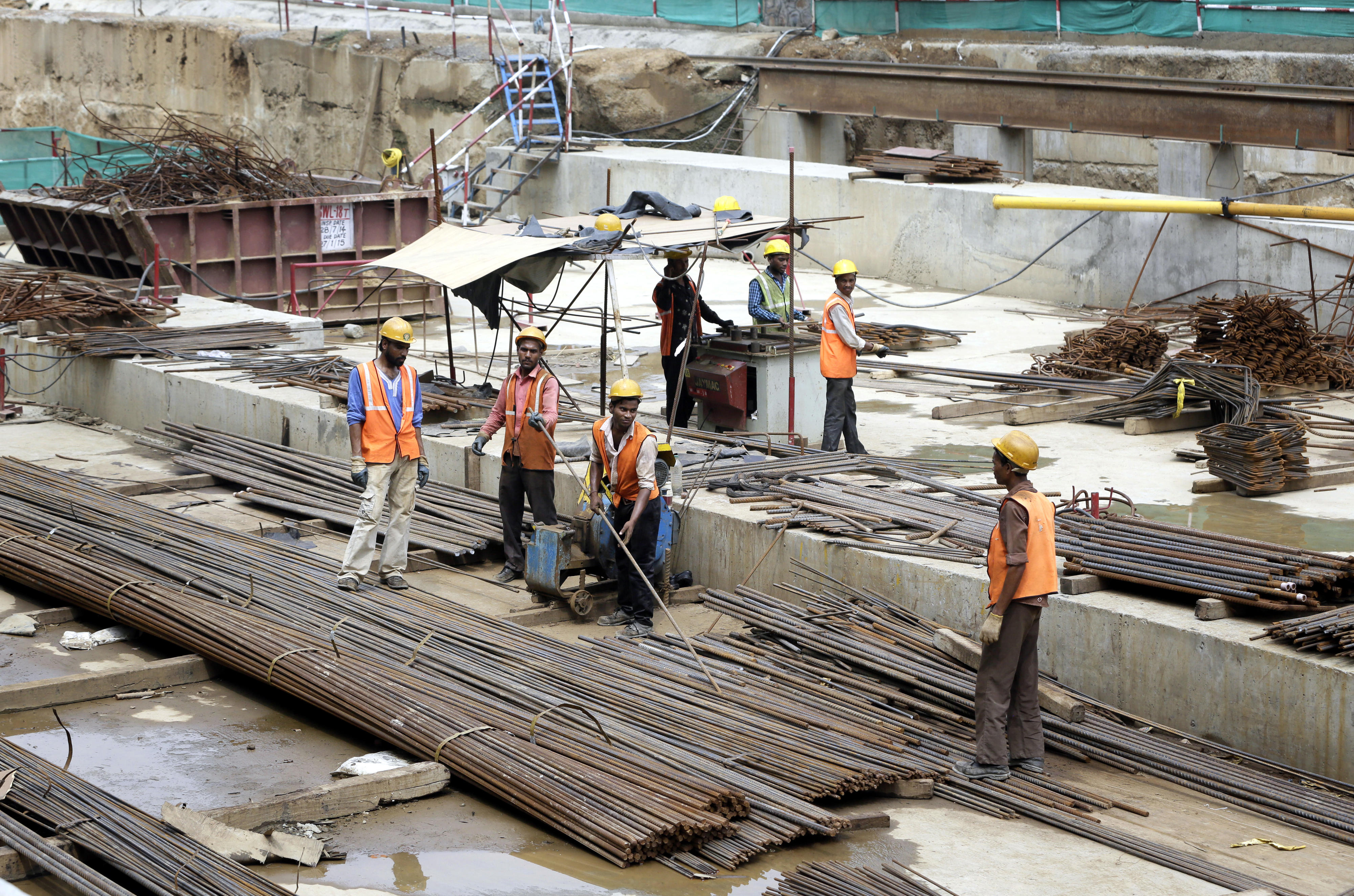Construction workers at a building site in the Indian capital New Delhi
Copyright© Thomas Köhler/photothek.net
Political situation Creating jobs, reducing poverty
Given how many people there are living in extreme poverty in India and the fact that each year millions of young Indians enter the labour market for the first time, the government’s policy focus is currently very much on economic policy and on creating jobs. In the past few years, fundamental economic reforms have been launched, including introducing a uniform value-added tax throughout the country and opening the country to more foreign investment. Various social, employment and support programmes have also been introduced. However, not all population groups in need of support benefit equally from these programmes.
Investment in infrastructure and digital technology
The government provides substantial financial support for development initiatives and programmes, and actively involves the private sector in this area. In recent years, there has also been major investment in the country’s infrastructure, such as energy supply, roads, railways, airports and large-scale solar power plants.
India is a forerunner when it comes to digital transformation. The majority of government services are already digital, including property registers and healthcare services. India’s Unified Payments Interface is one of the most successful digital payment systems in the world. It allows all account holders to transfer money to companies and private individuals using their mobile number.
Human rights
Many population groups face systematic discrimination because of their ethnic or social background or their religious beliefs. The main causes for these common human rights violations continue to be the low level of education among parts of the population and deeply rooted social and cultural practices. Although the caste system was officially abolished in 1949, for example, it still dictates social life in many parts of the country.
Gender equality may be enshrined in the constitution, but girls and women still face structural disadvantages not only in Indian society but also in politics and business. While their access to educational and health facilities has improved, in many families there continues to be a bias towards the male members when it comes to food, medical care and education. Widespread violence against women continues to be a problem as well.
Employment among women remains very low. Even highly educated women often take on the traditional role of housewife and mother after getting married. Women with low qualifications primarily work in agriculture or the textiles industry – sometimes under inhumane conditions. Inadequate access to land rights, financial services and decision-making processes is making it difficult for women, especially rural women, to become economically independent.
As at: 03/09/2024
